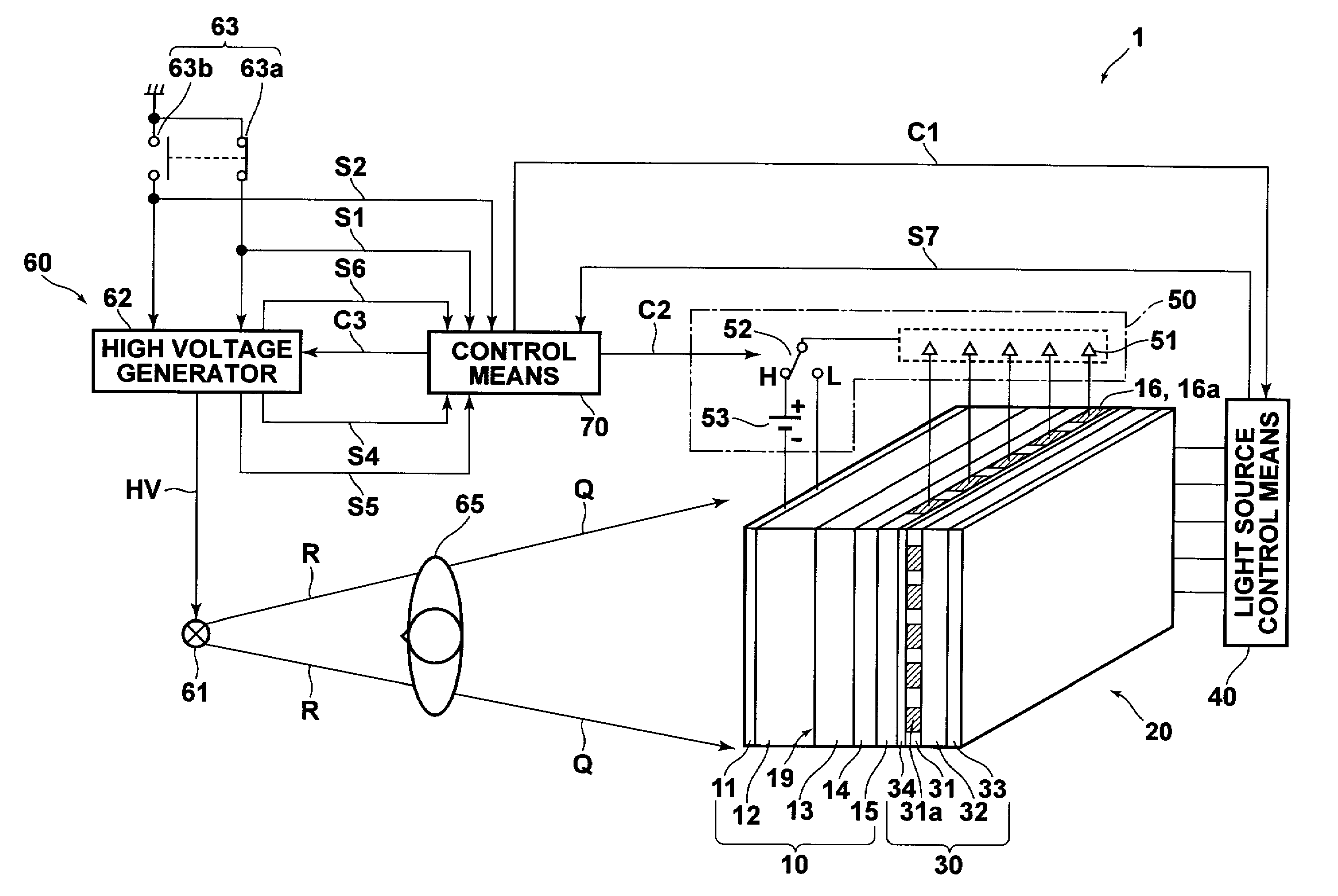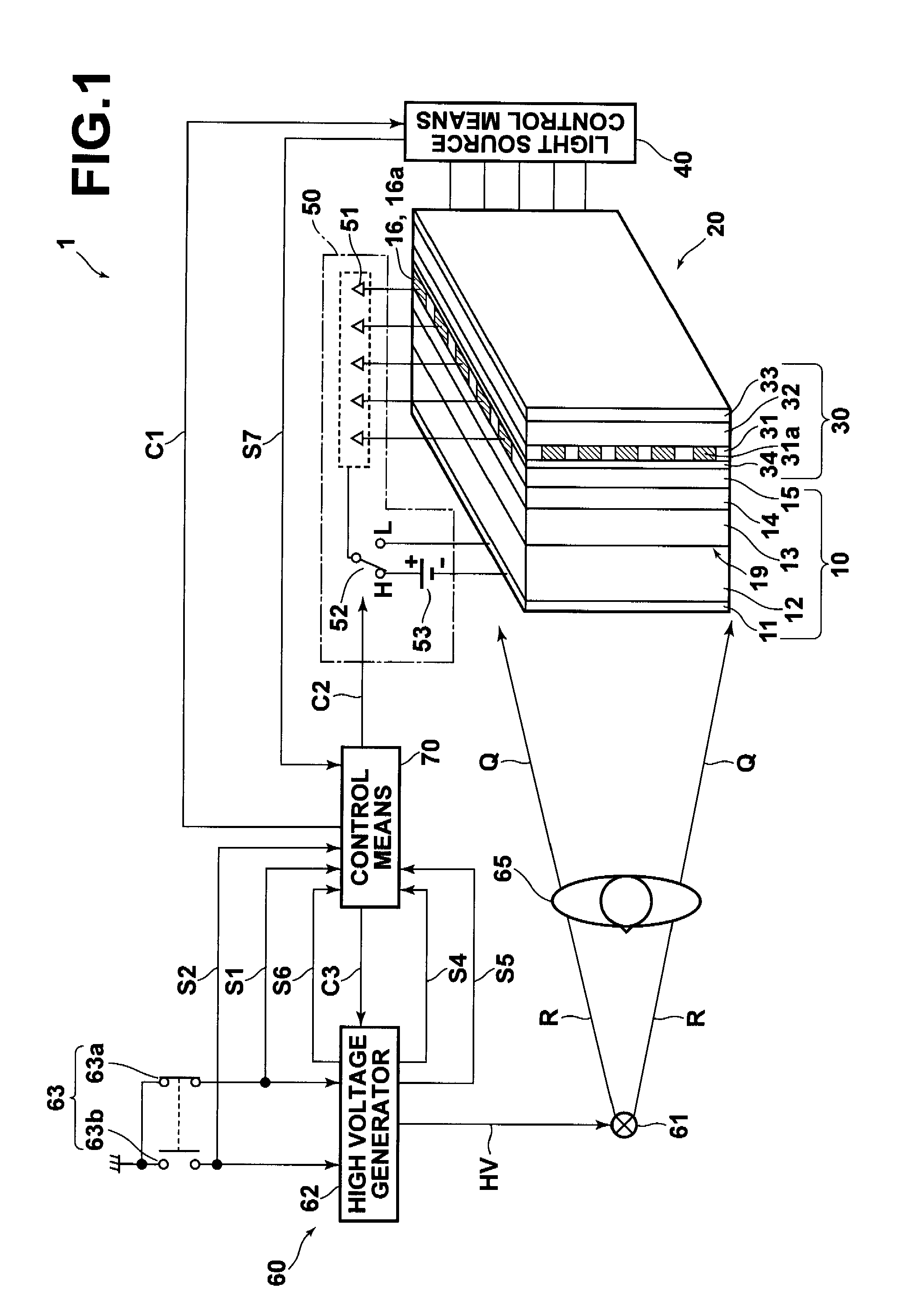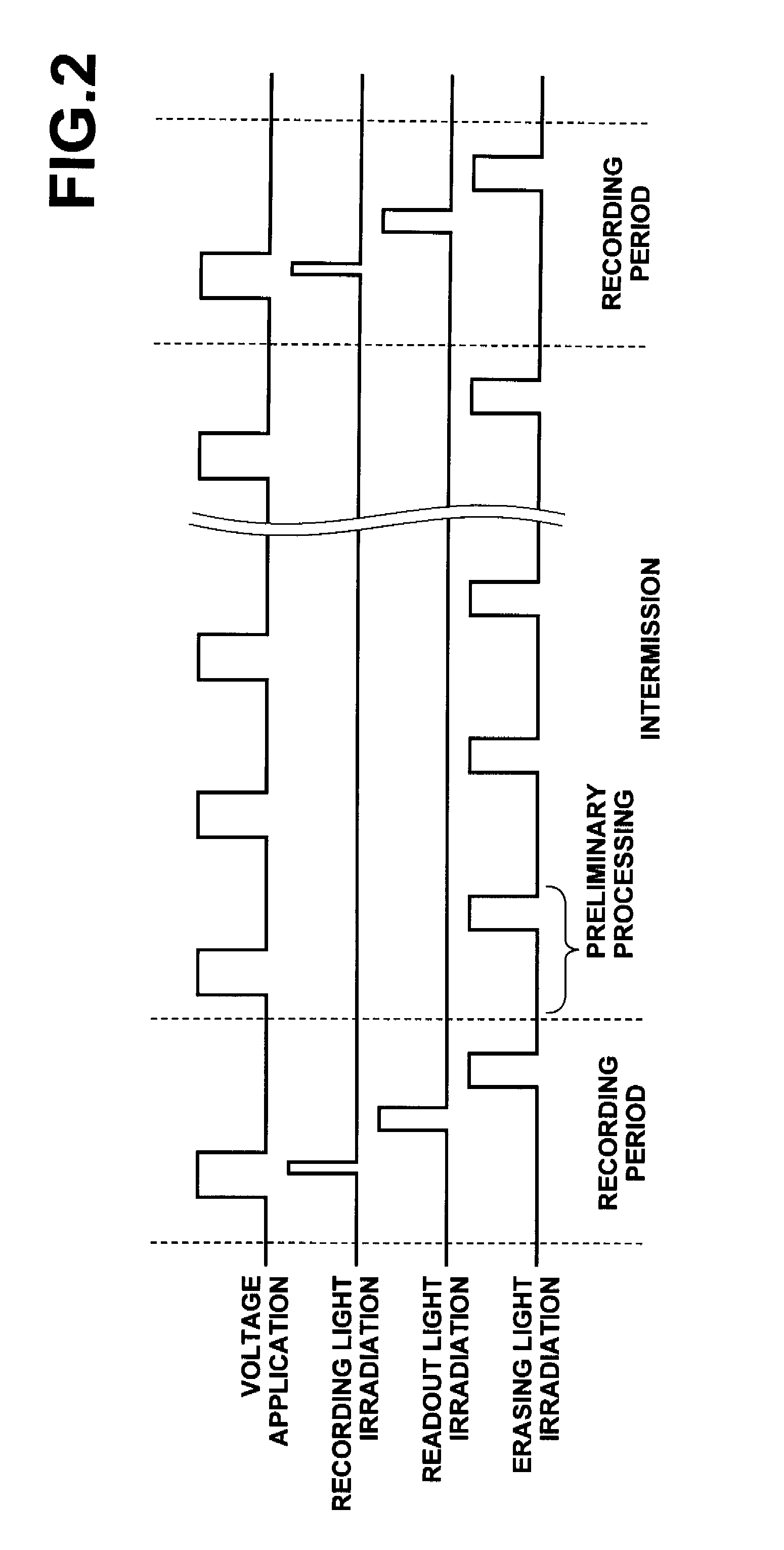Image information recording/readout method and apparatus
a technology of image information and recording method, applied in the field of image recoding/readout method and apparatus, can solve the problems of so-called photovoltaic noise, large source of etc., and achieve the effects of reducing and stabilizing photovoltaic noise, dark latent image noise, and high voltage application history nois
- Summary
- Abstract
- Description
- Claims
- Application Information
AI Technical Summary
Benefits of technology
Problems solved by technology
Method used
Image
Examples
Embodiment Construction
[0038]Hereinafter, an embodiment of the present invention will be described in detail with reference to the accompanying drawings.
[0039]FIG. 1 is a schematic view of a radiation image recording / readout apparatus to which the image information recording / readout method and apparatus of the present invention are applied.
[0040]As illustrated in FIG. 1, the radiation image recording / readout apparatus 1 includes: a solid state radiation detector (also simply referred to as “detector”) 10, as an electrostatic recorder; a planar light source 30 stacked on the detector 10; a readout unit 20 including a light source control means 40 for controlling the planar light source 30 and a current detection circuit 50 for reading out charges from the detector 10; a radiation irradiation unit 60; and a control means 70 connected to the current detection circuit 50 and radiation irradiation unit 60.
[0041]The detector 10 generates charges in a recording photoconductive layer 12 when recording radiation (...
PUM
| Property | Measurement | Unit |
|---|---|---|
| time | aaaaa | aaaaa |
| time | aaaaa | aaaaa |
| wavelength | aaaaa | aaaaa |
Abstract
Description
Claims
Application Information
 Login to View More
Login to View More - R&D
- Intellectual Property
- Life Sciences
- Materials
- Tech Scout
- Unparalleled Data Quality
- Higher Quality Content
- 60% Fewer Hallucinations
Browse by: Latest US Patents, China's latest patents, Technical Efficacy Thesaurus, Application Domain, Technology Topic, Popular Technical Reports.
© 2025 PatSnap. All rights reserved.Legal|Privacy policy|Modern Slavery Act Transparency Statement|Sitemap|About US| Contact US: help@patsnap.com



